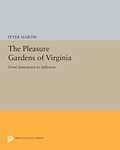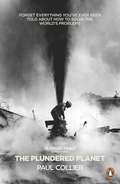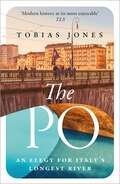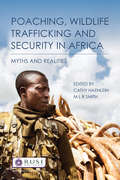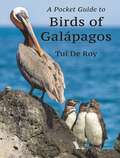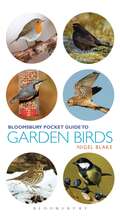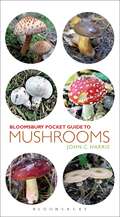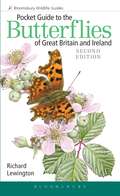- Table View
- List View
Players and Skills (Rugby Focus #7)
by Jon RichardsThis series covers all the areas of the modern game. It takes an in-depth look at the sport, the management, the rules and the international tournaments.It contains useful insights, advice on techniques, the international business of rugby and how the game is run.The books are aimed at all those interested in rugby - whether they play the game, are an avid fan or are new to the sport.
Playground: Longlisted for The Booker Prize 2024
by Richard PowersLONGLISTED FOR THE BOOKER PRIZE 2024A POWERFUL NEW NOVEL FROM THE PULITZER PRIZE-WINNING AND BOOKER-SHORTLISTED AUTHOR OF THE OVERSTORY AND BEWILDERMENT'Is there anything Richard Powers cannot write? The world here is complete, seductive, and promising. The writing feels like the ocean. Vast, mysterious, deep and alive' PERCIVAL EVERETT'An extraordinarily immersive journey through lives linked in mysterious ways - gripping, alarming and uplifting' EMMA DONOGHUERafi and Todd are two polar opposites at an elite high school where they bond over a three-thousand-year-old board game. It sets them up for life: Rafi will get lost in literature, while Todd’s work will lead to a startling AI breakthrough.Elsewhere, Evie Beaulieu sinks to the bottom of a swimming pool in Montreal strapped to one of the world’s first aqualungs; Ina Aroita grows up in naval bases across the Pacific with art as her only home.All of these people meet on the history-scarred island of Makatea in French Polynesia, marked for humanity’s next great adventure: a plan to send floating, autonomous cities out into the open sea. As the seasteaders close in, how will Evie play the ever-unfolding oceanic game? Will Ina engage in acts of destruction? Todd and Rafi, now estranged, still find themselves in competition: Todd unravels while working on an idea to redraw the boundaries of human immortality, while Rafi and the residents must decide if they will greenlight the new project on their shores and change their home forever.Set in the world’s largest ocean, Playground explores that last wild place we have yet to colonize and interweaves profound themes of technology and the environment, and a deep exploration of our shared humanity in a way only Richard Powers can.‘Powers is a master of taking important topics of our times – from threats to our oceans and climate change to AI – and turning them into riveting and fiercely relevant books imbued with psychological insight and a deep awe for nature. This eloquent dance of the scientific and emotional makes him one of our finest story tellers. PLAYGROUND is brilliant, captivating and important – and the best book I’ve read this year’ ANDREA WULFMore praise for Richard Powers:'Powers has extraordinary gifts as a writer' GUARDIAN'Impressively precise in its scientific conjectures, Bewilderment is no less rich or wise in its emotionality' OBSERVER'He composes some of the most beautiful sentences I've ever read. I'm in awe of his talent' OPRAH WINFREY'It is impossible to deny the importance of Powers's message' SUNDAY TIMES'Refreshing, original and moving' EVENING STANDARD
Playing Politics with Natural Disaster: Hurricane Agnes, the 1972 Election, and the Origins of FEMA
by Timothy W. KneelandHurricane Agnes struck the United States in June of 1972, just months before a pivotal election and at the dawn of the deindustrialization period across the Northeast. The response by local, state, and national officials had long-term consequences for all Americans. President Richard Nixon used the tragedy for political gain by delivering a generous relief package to the key states of New York and Pennsylvania in a bid to win over voters. After his landslide reelection in 1972, Nixon cut benefits for disaster victims and then passed legislation to push responsibility for disaster preparation and mitigation on to states and localities. The impact led to the rise of emergency management and inspired the development of the Federal Emergency Management Agency (FEMA).With a particular focus on events in New York and Pennsylvania, Timothy W. Kneeland narrates how local, state, and federal authorities responded to the immediate crisis of Hurricane Agnes and managed the long-term recovery. The impact of Agnes was horrific, as the storm left 122 people dead, forced tens of thousands into homelessness, and caused billions of dollars in damage from Florida to New York. In its aftermath, local officials and leaders directed disaster relief funds to rebuild their shattered cities and reshaped future disaster policies.Playing Politics with Natural Disaster explains how the political decisions by local, state, and federal officials shaped state and national disaster policy and continues to influence emergency preparedness and response to this day.
Playing with Fire: Embracing Risk and Danger in Schools
by Mike FaircloughThere is a misconception, within the teaching profession and the general public, that Ofsted, the Health and Safety Executive and the establishment are against children being exposed to danger and that schools are prevented from giving children experiences which involve risk. Mike Fairclough, headmaster at West Rise Junior School, has blown that theory out of the water. In the superb Playing With Fire, Mike urges all schools to follow his lead, empowering other Heads and their schools to provide activities for their pupils which include an element of risk and danger. With entertaining and visual examples of his work at West Rise, including bee keeping, water buffalo breeding, shooting, archery, Forest School, paddle boarding, and skinning rabbits, Mike breezily demonstrates how teething problems and mistakes are part and parcel of risk-taking and should be embraced. The result is an empowering book that urges educators to cultivate their own resilience, courage and trust in the same way that we are hoping to foster those qualities within our students.
The Pleasure Gardens of Virginia: From Jamestown to Jefferson
by Peter MartinUsing a rich assortment of illustrations and biographical sketches, Peter Martin relates the experiences of colonial gardeners who shaped the natural beauty of Virginia's wilderness into varied displays of elegance. He shows that ornamental gardening was a scientific, aesthetic, and cultural enterprise that thoroughly engaged some of the leading figures of the period, including the British governors at Williamsburg and the great plantation owners George Washington, Thomas Jefferson, William Byrd, and John Custis. In presenting accounts of their gardening efforts, Martin reveals the intricacies of colonial garden design, plant searches, experimentation, and the problems in adapting European landscaping ideas to local climate. These writings also bring to life the social and commercial interaction between Williamsburg and the plantations, together with early American ideas about cultured living. While placing Virginia's gardening in the larger context of the colonial South, Martin tells a very human story of how this art both influenced and reflected the quality of colonial life. As Virginia grew economically and culturally, the garden became a projection of the gardener's personal identity, as exemplified by the endeavors of Washington and Jefferson at Mount Vernon and Monticello. In order to recapture the gardens as they existed in colonial times, Martin brings together paintings, drawings, and the findings of modern archaeological excavations.Originally published in 1991.The Princeton Legacy Library uses the latest print-on-demand technology to again make available previously out-of-print books from the distinguished backlist of Princeton University Press. These editions preserve the original texts of these important books while presenting them in durable paperback and hardcover editions. The goal of the Princeton Legacy Library is to vastly increase access to the rich scholarly heritage found in the thousands of books published by Princeton University Press since its founding in 1905.
Plows, Plagues, and Petroleum: How Humans Took Control of Climate
by William F. RuddimanThe impact on climate from 200 years of industrial development is an everyday fact of life, but did humankind's active involvement in climate change really begin with the industrial revolution, as commonly believed? Plows, Plagues, and Petroleum has sparked lively scientific debate since it was first published--arguing that humans have actually been changing the climate for some 8,000 years--as a result of the earlier discovery of agriculture.The "Ruddiman Hypothesis" will spark intense debate. We learn that the impact of farming on greenhouse-gas levels, thousands of years before the industrial revolution, kept our planet notably warmer than if natural climate cycles had prevailed--quite possibly forestalling a new ice age.Plows, Plagues, and Petroleum is the first book to trace the full historical sweep of human interaction with Earth's climate. Ruddiman takes us through three broad stages of human history: when nature was in control; when humans began to take control, discovering agriculture and affecting climate through carbon dioxide and methane emissions; and, finally, the more recent human impact on climate change. Along the way he raises the fascinating possibility that plagues, by depleting human populations, also affected reforestation and thus climate--as suggested by dips in greenhouse gases when major pandemics have occurred. While our massive usage of fossil fuels has certainly contributed to modern climate change, Ruddiman shows that industrial growth is only part of the picture. The book concludes by looking to the future and critiquing the impact of special interest money on the global warming debate. In the afterword, Ruddiman explores the main challenges posed to his hypothesis, and shows how recent investigations and findings ultimately strengthen the book's original claims.
Plows, Plagues, and Petroleum: How Humans Took Control of Climate
by William F. RuddimanThe impact on climate from 200 years of industrial development is an everyday fact of life, but did humankind's active involvement in climate change really begin with the industrial revolution, as commonly believed? Plows, Plagues, and Petroleum has sparked lively scientific debate since it was first published--arguing that humans have actually been changing the climate for some 8,000 years--as a result of the earlier discovery of agriculture.The "Ruddiman Hypothesis" will spark intense debate. We learn that the impact of farming on greenhouse-gas levels, thousands of years before the industrial revolution, kept our planet notably warmer than if natural climate cycles had prevailed--quite possibly forestalling a new ice age.Plows, Plagues, and Petroleum is the first book to trace the full historical sweep of human interaction with Earth's climate. Ruddiman takes us through three broad stages of human history: when nature was in control; when humans began to take control, discovering agriculture and affecting climate through carbon dioxide and methane emissions; and, finally, the more recent human impact on climate change. Along the way he raises the fascinating possibility that plagues, by depleting human populations, also affected reforestation and thus climate--as suggested by dips in greenhouse gases when major pandemics have occurred. While our massive usage of fossil fuels has certainly contributed to modern climate change, Ruddiman shows that industrial growth is only part of the picture. The book concludes by looking to the future and critiquing the impact of special interest money on the global warming debate. In the afterword, Ruddiman explores the main challenges posed to his hypothesis, and shows how recent investigations and findings ultimately strengthen the book's original claims.
The Plundered Planet: How to Reconcile Prosperity With Nature
by Paul CollierHow can we help poorer countries become richer without harming the planet? Is there a way of reconciling prosperity with nature? World-renowned economist Paul Collier offers smart, surprising and above all realistic answers to this dilemma. Steering a path between the desires of unchecked profiteering and the romantic views of environmentalists, he explores creative ways to deal with poverty, overpopulation and climate change -showing that the solutions needn't cost the earth. The book proposes a radical rethinking of international policies and uniquely, offers real solutions backed up by real data from research Collier has spearheaded
The Po: An Elegy for Italy's Longest River
by Tobias JonesA captivating journey along the iconic River Po and through Italian history, society and culture. 'Delightful... A wonderful cornucopia of history' TLS 'Uncovers the Po's fascinating history' Guardian 'Tobias Jones is the perfect guide' SpectatorThe Po is the longest river in Italy, travelling for 652 kilometres from one end of the country to the other. It rises by the French border in the Alps and meanders the width of the entire peninsula to the Adriatic Sea in the east. Flowing next to many of Italy's most exquisite cities – Ferrara, Mantova, Parma, Cremona, Pavia and Torino – the river is a part of the national psyche, as iconic to Italy as the Thames is to England or the Mississippi to the USA.For millennia, the Po was a vital trading route and a valuable source of tax revenue, fiercely fought over by rival powers. It was also moat protecting Italy from invaders from the north, from Hannibal to Holy Roman Emperors. It breached its banks so frequently that its floodplain swamps were homes to outlaws and itinerants, to eccentrics and experimental communities. But as humans radically altered the river's hydrology, those floodplains became important places of major industries and agricultures, the source of bricks, timber, silk, hemp, cement, caviar, mint, flour and risotto rice.Tobias Jones travels the length of the river against the current, gathering stories of battles, writers, cuisines, entertainers, religious minorities and music. Both an ecological lament and a celebration of the resourcefulness and resilience of the people of the Po, the book opens a window onto a stunning, but now neglected, part of Italy.
Poached: Inside the Dark World of Wildlife Trafficking (A Merloyd Lawrence Book)
by Rachel Love NuwerAn intrepid investigation of the criminal world of wildlife trafficking--the poachers, the traders, and the customers--and of those fighting against it Journalist Rachel Nuwer plunges the reader into the underground of global wildlife trafficking, a topic she has been investigating for nearly a decade. Our insatiable demand for animals -- for jewelry, pets, medicine, meat, trophies, and fur -- is driving a worldwide poaching epidemic, threatening the continued existence of countless species. Illegal wildlife trade now ranks among the largest contraband industries in the world, yet compared to drug, arms, or human trafficking, the wildlife crisis has received scant attention and support, leaving it up to passionate individuals fighting on the ground to try to ensure that elephants, tigers, rhinos, and more are still around for future generations. As Reefer Madness (Schlosser) took us into the drug market, or Susan Orlean descended into the swampy obsessions of TheOrchid Thief, Nuwer--an award-winning science journalist with a background in ecology--takes readers on a narrative journey to the front lines of the trade: to killing fields in Africa, traditional medicine black markets in China, and wild meat restaurants in Vietnam. Through exhaustive first-hand reporting that took her to ten countries, Nuwer explores the forces currently driving demand for animals and their parts; the toll that demand is extracting on species across the planet; and the conservationists, rangers, and activists who believe it is not too late to stop the impending extinctions. More than a depressing list of statistics, Poached is the story of the people who believe this is a battle that can be won, that our animals are not beyond salvation.
Poaching, Wildlife Trafficking and Security in Africa: Myths and Realities (Whitehall Papers)
by Cathy Haenlein M L SmithA worldwide surge in poaching and wildlife trafficking is threatening to decimate endangered species. This crisis also threatens the security of human beings in ways ignored until recently by decision-makers slow to begin to treat what is typically viewed as a ‘conservation issue’ as serious crime. Over the past decade, as the scale and profitability of poaching and wildlife trafficking have grown, politicians, journalists and campaigners throughout the world have begun to take notice – they are offering striking appraisals of the threat posed not only to endangered species but also to human populations. Many of these appraisals, however, are made in the absence of a detailed body of empirical research and analysis to underpin them. The result is the growth of a range of myths and misperceptions around the security threats posed, particularly as they relate to Africa. Poaching, Wildlife Trafficking and Security in Africa examines the most common narratives on poaching, wildlife trafficking and security. It critically analyses the dominant discourses on poaching and wildlife trafficking as threats to human security, as drivers of conflict, as funders of terrorism and as a focus for organised crime. In doing so, it seeks to sort myth from reality, to clarify how poaching and wildlife trafficking, as much cited threats to security, can most accurately be conceived. Such a study is crucial to the efforts of stakeholders now rightly looking to respond not just to the threat posed to endangered species, but also to the security and wellbeing of human beings.
Poaching, Wildlife Trafficking and Security in Africa: Myths and Realities (Whitehall Papers)
by Cathy Haenlein M L SmithA worldwide surge in poaching and wildlife trafficking is threatening to decimate endangered species. This crisis also threatens the security of human beings in ways ignored until recently by decision-makers slow to begin to treat what is typically viewed as a ‘conservation issue’ as serious crime. Over the past decade, as the scale and profitability of poaching and wildlife trafficking have grown, politicians, journalists and campaigners throughout the world have begun to take notice – they are offering striking appraisals of the threat posed not only to endangered species but also to human populations. Many of these appraisals, however, are made in the absence of a detailed body of empirical research and analysis to underpin them. The result is the growth of a range of myths and misperceptions around the security threats posed, particularly as they relate to Africa. Poaching, Wildlife Trafficking and Security in Africa examines the most common narratives on poaching, wildlife trafficking and security. It critically analyses the dominant discourses on poaching and wildlife trafficking as threats to human security, as drivers of conflict, as funders of terrorism and as a focus for organised crime. In doing so, it seeks to sort myth from reality, to clarify how poaching and wildlife trafficking, as much cited threats to security, can most accurately be conceived. Such a study is crucial to the efforts of stakeholders now rightly looking to respond not just to the threat posed to endangered species, but also to the security and wellbeing of human beings.
The Pocket Book of Bird Anatomy (RSPB)
by Marianne TaylorWhat is a bird? To answer that, we must understand how birds are different from all other living things and how they fit into the diversity of life on Earth.This excellent RSPB guide to bird anatomy looks at the avian body, system by system, how it evolved, and how it functions. Chapters explore traits that are unique to birds, including their remarkable one-way breathing cycle, their trimmed-down skeleton, how feathers permit flight, provide weather-proofing and add beauty, and the avian bill – a lightweight replacement for both teeth and food-handling forelimbs. Each chapter tackles a particular body system and includes detailed anatomical illustrations, from cells and organs to skeletons and muscles, to show how birds' anatomical adaptations enable all their physical feats and fascinating behaviour. Feature spreads offer more in-depth analysis on topics like birdsong, temperature control, ornamentation, unusual diets, social behaviour, nocturnal adaptations, mutation and natural selection.Featuring more than 300 diagrams and colour photos, this fascinating new book also looks at the human impact on the avian world and reveals how behaviour and anatomy work together to produce these vibrant living beings that delight and inspire us so much.
The Pocket Book of Bird Anatomy (RSPB)
by Marianne TaylorWhat is a bird? To answer that, we must understand how birds are different from all other living things and how they fit into the diversity of life on Earth.This excellent RSPB guide to bird anatomy looks at the avian body, system by system, how it evolved, and how it functions. Chapters explore traits that are unique to birds, including their remarkable one-way breathing cycle, their trimmed-down skeleton, how feathers permit flight, provide weather-proofing and add beauty, and the avian bill – a lightweight replacement for both teeth and food-handling forelimbs. Each chapter tackles a particular body system and includes detailed anatomical illustrations, from cells and organs to skeletons and muscles, to show how birds' anatomical adaptations enable all their physical feats and fascinating behaviour. Feature spreads offer more in-depth analysis on topics like birdsong, temperature control, ornamentation, unusual diets, social behaviour, nocturnal adaptations, mutation and natural selection.Featuring more than 300 diagrams and colour photos, this fascinating new book also looks at the human impact on the avian world and reveals how behaviour and anatomy work together to produce these vibrant living beings that delight and inspire us so much.
Pocket Guide Geologie im Gelände
by Tom McCannDieses Buch ist ein Bestimmungsatlas, der hilft, Minerale, Gesteine und die wichtigsten Fossilgruppen im Gelände zu erkennen und zu beschreiben. Aber nicht nur das. Zusätzlich wird eine Reihe von wichtigen geologischen Strukturen beschrieben und in zahlreichen Fotos dargestellt. Dadurch werden Sie eingeladen, die Geologie hinter Landschaften und Gesteinen draußen im Gelände aufzuspüren. Denn die Geologie ist eine Wissenschaft, die erst richtig lebendig wird beim Wandern in der Natur, z. B. an der Küste oder durch Nationalparks. Mit wenig Wissen werde Sie die Landschaft anders erleben. Die Gesteine werden quasi lebendig und Sie werden die Geschichte wie ein Buch lesen können und die Vielfalt und Komplexität von geologischen Prozessen verstehen. Solche Prozesse – ein Wechselspiel von Magmatismus, Tektonik, Metamorphose, Klima und Sedimentation – haben die heutige Erdoberfläche geformt. Das Buch wendet sich an die geologisch interessierten Leser und Studierende, denen das Werk als Begleiter bei Ausflügen durch die Natur gute Dienste leisten wird.
Pocket Guide Geology in the Field
by Tom McCannThis book is a field guide that describes and explains the commonest minerals and rocks as well as introducing the most important fossil groups. In addition, a variety of geological structures are described and illustrated in the numerous diagrams and photographs. The guide is your perfect companion for hikes or walks in the countryside, inviting you to discover the geology hidden behind the landscapes surrounding us, as well as helping you to recognise the various minerals, rocks and fossils, you might encounter. Geology is a science that only really comes to life when we are outside, for example, on walks or hikes along the coast or through national parks. With a little knowledge you will be able to experience the landscape in a completely different way. The rocks will “come alive”, so to speak, and you will be able to read their history like a book - understanding the range and complexity of geological processes which have formed the Earth beneath our feet. Such processes - an interplay of magmatism, tectonics, metamorphosis and sedimentation, as well as climate and sea-level change - have shaped the Earth over millennia and continue to do so even at the present time. The book is aimed at nature lovers of all types, as well as students of geology – in fact, anyone who is interested in the world around us. It will provide the perfect companion for walks or hikes in the countryside. This book is a translation of the original German 1st edition Pocket Guide Geologie im Gelände by Tom McCann, published by Springer-Verlag GmbH Germany, part of Springer Nature in 2019. The initial translation was done with the help of artificial intelligence (machine translation by the service DeepL.com). A subsequent detailed revision by the author ensures that the book reads stylistically like a conventional translation. Springer Nature works continuously to further the development of tools for the production of books and on the related technologies to support the authors.
Pocket Guide to Balsam Bashing: and how to tackle other INVASIVE NON-NATIVE SPECIES
by Theo PikeIn recent years, we’ve all become more familiar with the idea of invasive species.Plants and animals as varied as giant hogweed, the mink and oak processionary moths regularly make headlines because of the health, environmental and economic problems they cause. Invasive deer contribute to more than 74,000 traffic accidents in the UK every year, while Japanese knotweed added £70m to the bill for staging the London Olympics, and could soon stop you getting a mortgage on your house.These invasive species destroy crops and forestry, dump silt into rivers, sabotage drains and electrical infrastructure, cut off access to beautiful places, and drive native rare and iconic species to extinction.And they cost us all a lot of money – at least £1.8bn to the UK economy each year.How can you help stop this expensive, dangerous (and ultimately boring) slide towards global blandification?Read this book and then roll up your sleeves!• Over 40 different species featured• List of actions you can take• Useful contact list for those getting involved
A Pocket Guide to Birds of Galápagos
by Tui De RoyA compact, richly illustrated photographic field guide to all of the birds of Galápagos, from renowned photographer and writer Tui De RoyA lifelong resident of Galápagos, Tui De Roy has been observing, studying, and photographing the islands’ astonishing birdlife for sixty years. In A Pocket Guide to Birds of Galápagos, she distills everything she has learned to create a one-of-a-kind field guide that every birder visiting the archipelago will want to carry with them wherever they go.A compact yet comprehensive combination of field guide and natural history, the book features more than 600 of De Roy’s superb photographs and is packed with detailed, easy-to-access information in bullet-point format. Every resident bird species is fully described and abundantly illustrated, showing different aspects of their life cycle, habitat, and behavior. And the islands’ most iconic bird group—Darwin’s Finches—is given special attention. With precise descriptions including plumage and beak variations, the book corrects many common identification errors about this group.Unique in design and content, A Pocket Guide to Birds of Galápagos is a must-have for all wildlife enthusiasts traveling to this fabled archipelago—and anyone who wants to better understand its spectacular birds.A compact yet comprehensive photographic identification guideCovers all resident species and frequent migrantsFeatures more than 600 of Tui De Roy’s superb color photographsIncludes distribution maps and easy-to-find information for identifying and understanding each species, including life cycles, habits, range, and conservation status
Pocket Guide To Garden Birds (Pocket Guides)
by Nigel BlakeThis compact title is an essential guide to every aspect of the subject, from when and what to feed the birds to building bird tables and nest boxes and planting a garden that will provide nesting, feeding and roosting places. There is also an ID guide to 80 of the most common garden bird species, including the familiar Chaffinch and Blue Tit and more unusual visitors such as Brambling, Redstart and Tawny Owl.This book is as visually impressive as it is easy to use, with many stunning full-page and double-page images to support the authoritative text. Printed on quality paper, the paperback format with flaps adds to the book's durability in the field and provides built-in page-markers for quick reference.
Pocket Guide To Garden Birds (Pocket Guides)
by Nigel BlakeThis compact title is an essential guide to every aspect of the subject, from when and what to feed the birds to building bird tables and nest boxes and planting a garden that will provide nesting, feeding and roosting places. There is also an ID guide to 80 of the most common garden bird species, including the familiar Chaffinch and Blue Tit and more unusual visitors such as Brambling, Redstart and Tawny Owl.This book is as visually impressive as it is easy to use, with many stunning full-page and double-page images to support the authoritative text. Printed on quality paper, the paperback format with flaps adds to the book's durability in the field and provides built-in page-markers for quick reference.
Pocket Guide to Mushrooms (Pocket Guides)
by John C. HarrisThe ebook Pocket Guide to Mushrooms covers 158 of the most common mushrooms found in the UK and also in northern and central Europe, each mushroom is identified and presented with expert photography in this informative ebook. It is as visually impressive as it is easy to use, with many stunning images to support the authoritative text.
Pocket Guide to Mushrooms (Pocket Guides)
by John C. HarrisPocket Guide to Mushrooms covers 158 of the most common mushrooms found in the UK and also in northern and central Europe, each mushroom is identified and presented with expert photography in this informative yet highly portable ebook. It is as visually impressive as it is easy to use, with many stunning images to support the authoritative text.
A Pocket Guide to Sharks of the World: Second Edition (Wild Nature Press)
by Dr. David A. Ebert Marc Dando Dr. Sarah FowlerAn updated and comprehensive guide identifying all of the world's sharksSharks are some of the most misunderstood animals on the planet. We still have a lot to learn about these fascinating creatures, which are more seriously threatened with extinction and in greater need of conservation and management than any other major group of vertebrates.A Pocket Guide to Sharks of the World is the only field guide to identify, illustrate, and describe every known shark species. Its compact format makes it handy for many situations, including recognizing living species, fishery catches, or parts sold at markets. This expanded second edition presents lavish images, details on newly discovered species, and updated text throughout. The book contains useful sections on identifying shark teeth and the shark fins most commonly encountered in the fin trade, and takes a look at shark biology, ecology, and conservation. A Pocket Guide to Sharks of the World will be an essential resource and definitive reference for years to come.An updated guide to all of the world’s sharksEach species is illustrated and describedHandy, compact format with concise textUseful sections on the identification of shark teeth and fins
Pocket Guide to the Butterflies of Great Britain and Ireland (Field Guides)
by Richard LewingtonPresented in an accessible, easy-to-use format, this is an ideal guide for both beginners and more experienced enthusiasts. It includes more than 600 superb illustrations of all the life stages of each species, together with beautiful artworks of the butterflies in their natural settings and pertinent species information, distribution maps and life history charts. The second edition features a new, illustrated 'at-a-glance' identification guide, updated distribution maps and species accounts, and new spreads and artwork for the Cryptic Wood White and Scarce Tortoiseshell.
Pocket Guide to the Butterflies of Great Britain and Ireland (Field Guides)
by Richard LewingtonPresented in an accessible, easy-to-use format, this is an ideal guide for both beginners and more experienced enthusiasts. It includes more than 600 superb illustrations of all the life stages of each species, together with beautiful artworks of the butterflies in their natural settings and pertinent species information, distribution maps and life history charts. The second edition features a new, illustrated 'at-a-glance' identification guide, updated distribution maps and species accounts, and new spreads and artwork for the Cryptic Wood White and Scarce Tortoiseshell.




